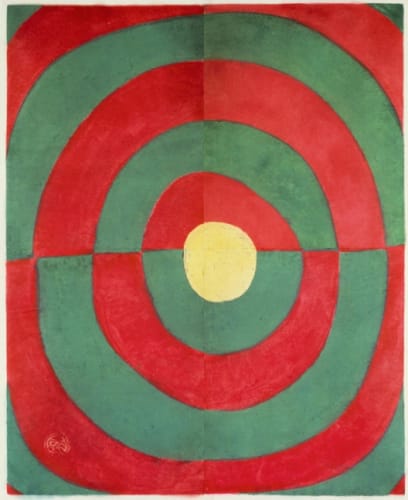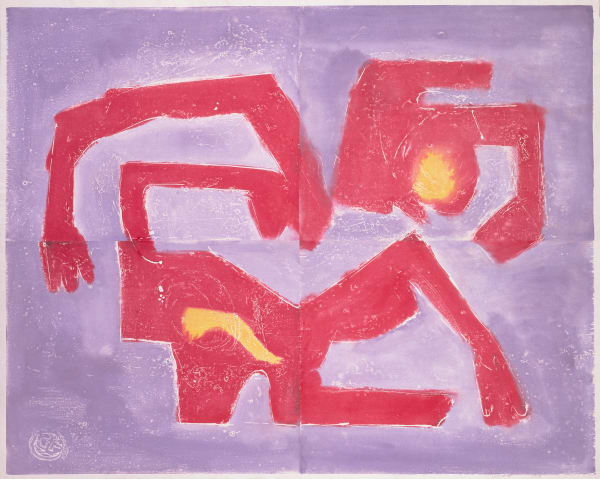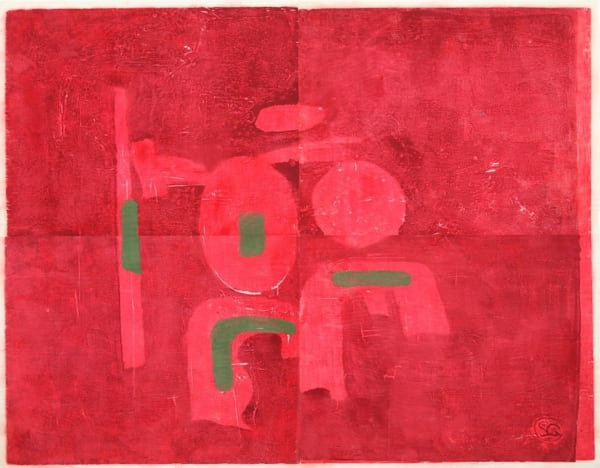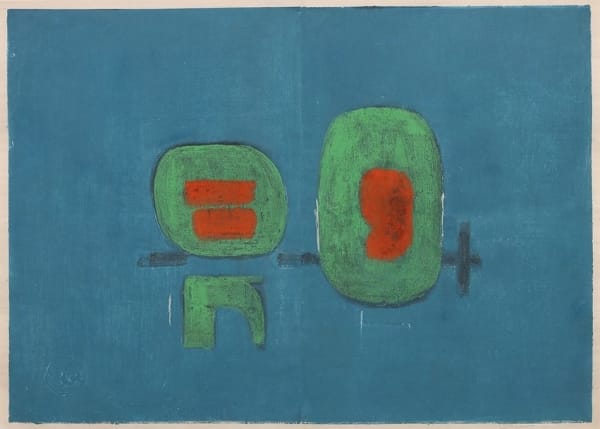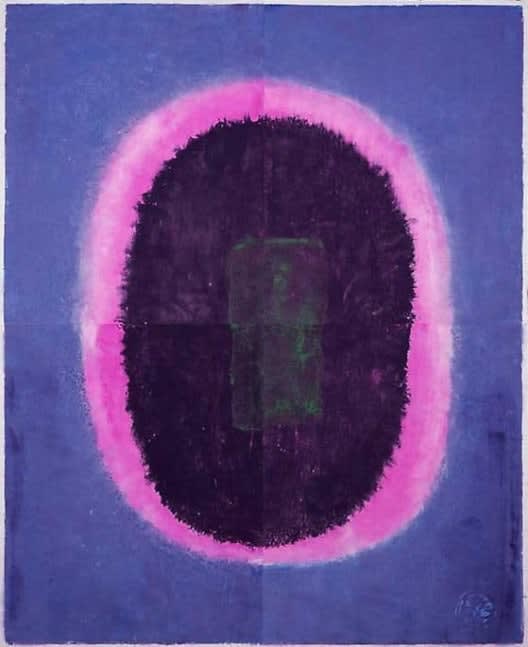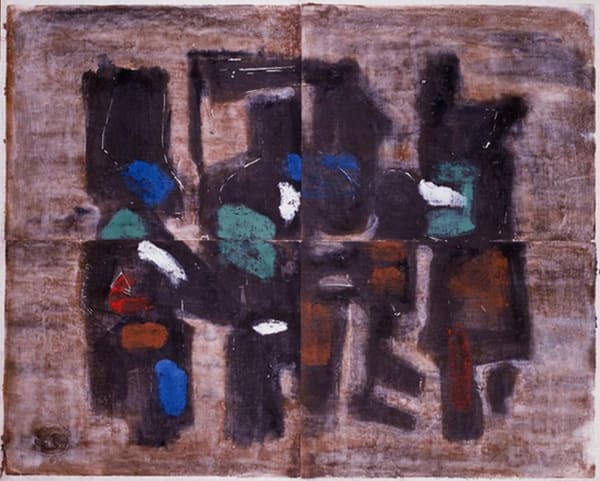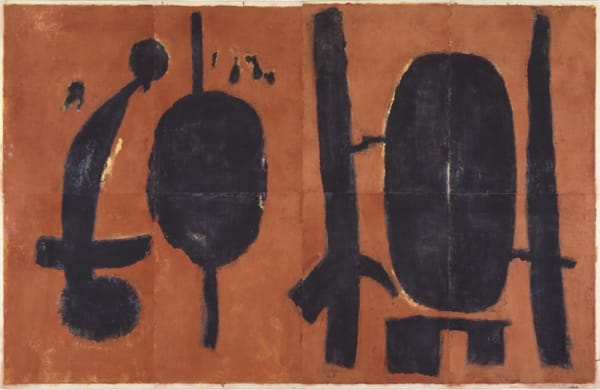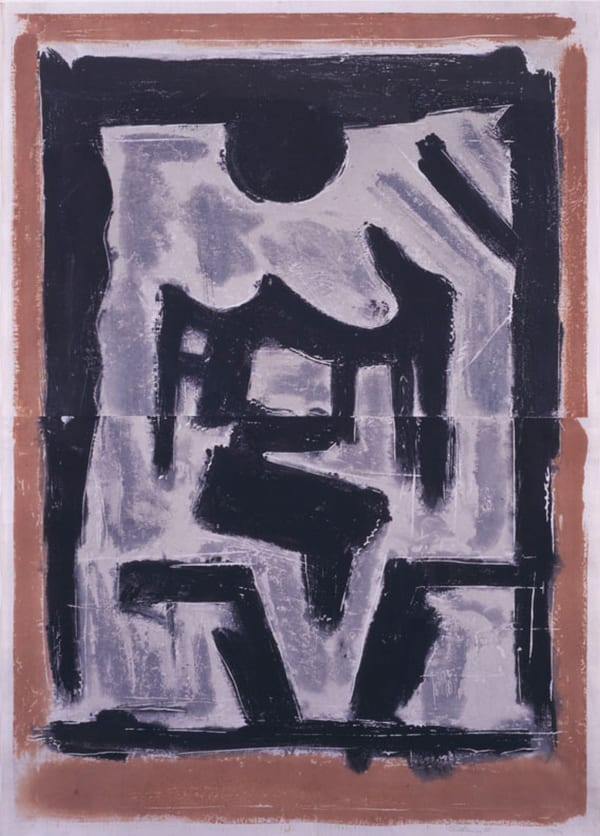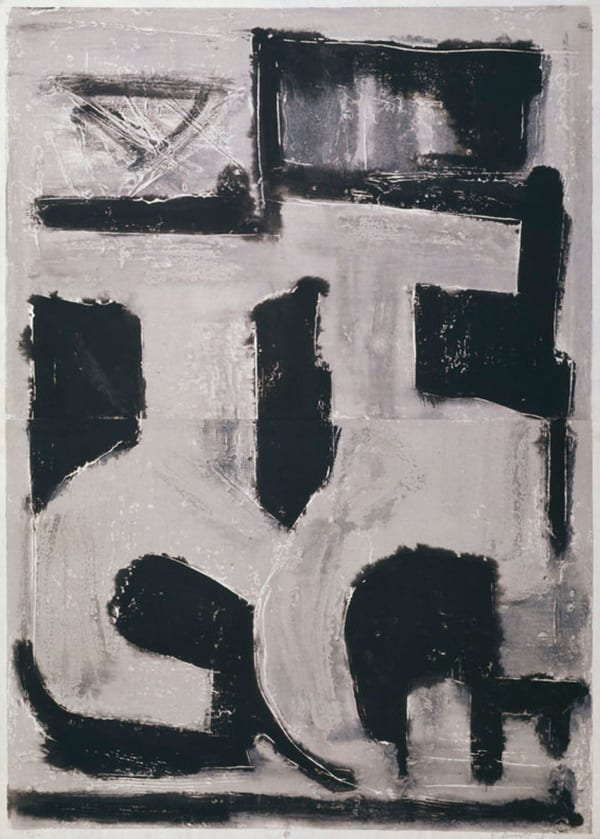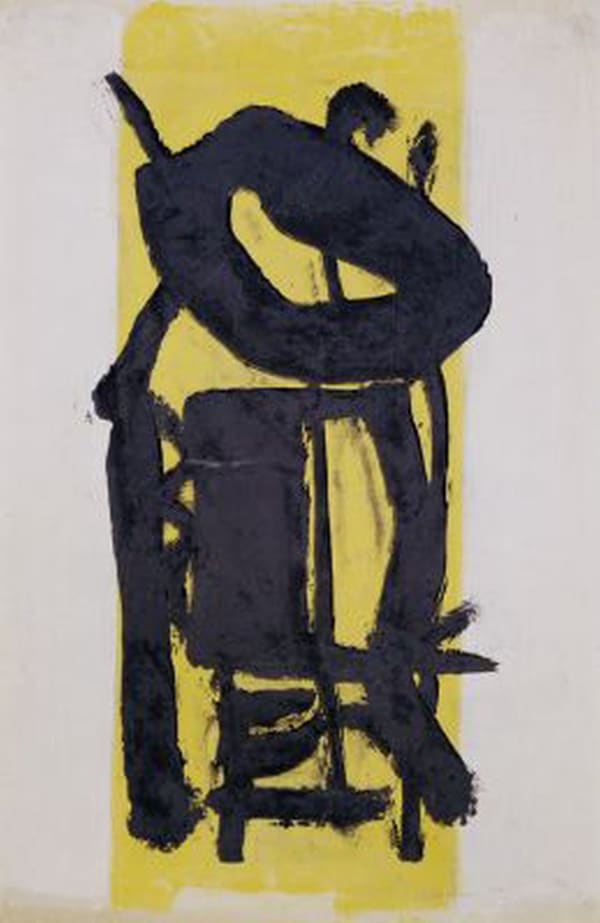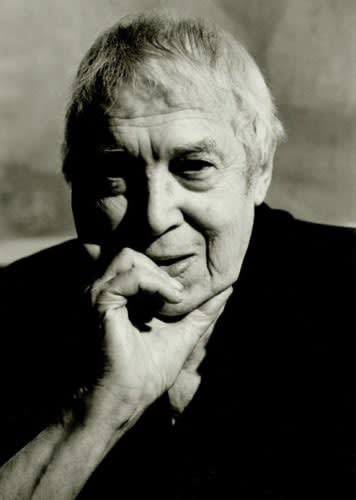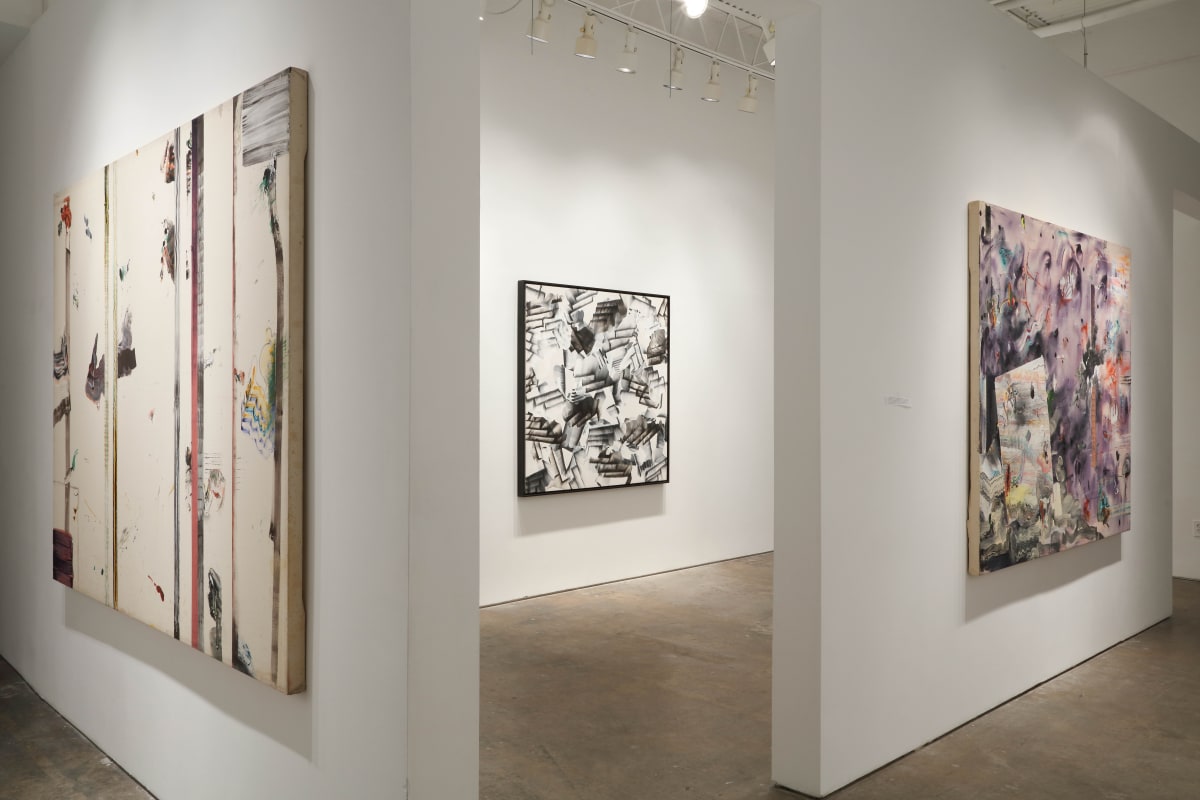Sam Glankoff American, 1894-1982
“The recognition which the work of Sam Glankoff is receiving attests to the compelling beauty of the imagery. His work has found its unique place at the center of the tradition of gestural abstraction and today is being given a place in American art history of the 20th century.”
- Tim Foley
Sam Glankoff was a New York-based, American artist whose innovative techniques and contributions to the enduring language of abstract expressionism have earned him a distinct place in the history of modern art. Primarily a self-taught painter, Glankoff was also an accomplished woodcut artist. Technically innovative, decidedly individualistic and, by his own choice, routinely isolated from the broader society and art world he found so distracting, Glankoff developed an original technique that combined aspects of print-making and painting in an all-new, modernist genre.
Glankoff invented “print- paintings,” richly layered works made with colored, water-based inks applied to delicate Japanese papers. Joining several sheets of paper together to create large-format works, he produced eloquent abstractions whose primordial symbols, bold brushstrokes and spiritual energy found affinities with both the monumental art forms of ancient civilizations and the aspirational expressions of the art of his time.
During his youth, Glankoff played the violin, an instrument he continued to play throughout his life. Having demonstrated his musical and artistic aptitude at an early age, he clearly expressed his artistic aspirations from an early age. His father, however, took little interest in the rearing of his children and discouraged Sam’s artistic pursuits. As a teenager, Glankoff pursued any job that, as he would later recall, allowed him to use a paintbrush, and he regularly visited art museums instead of going to school. When he was 20 years old, he began taking evening classes at New York’s Art Students League, but in 1917, as a pacifist—and decidedly not a joiner of any kind of club or clique—he left the United States for Cuba as a conscientious objector when the U.S. entered World War I. In Cuba, Glankoff traveled around on horseback, painting portraits — and at least one mural — in exchange for food.
In 1918, his wartime hiatus was abruptly interrupted when he was arrested on several charges — that turned out to be false — of having taken part in the earlier bombing of a railway station in Miami. After several months in prison in Cuba, Glankoff was released as the war came to a close. While in jail, he had met one of the German Upmanns of the London based H. Upmann bank, which in the 1840s had established a cigar factory in Cuba. After Glankoff’s release from prison, the businessman hired him to paint his portrait and that of his American girlfriend; with the earnings from those commissions, the young artist was able to return to New York. Today, only photographs of those early Glankoff portraits still exist.
Back in New York, in the early 1920s, Glankoff worked as a commercial artist and continued to paint. He lived in Greenwich Village, with his brother Mort. Later, he moved to the Union Square District, which had become an artists’ enclave, and then moved again to an artist’s studio on East 59th Street. Glankoff frequently sojourned in Gloucester, Massachusetts, and in Woodstock, New York, towns that boasted well-known artists’ colonies. Nevertheless, in each setting, even though he was surrounded by communities of fellow artists, Glankoff typically kept to himself. In 1981, at the age of 87, Glankoff had his first-ever solo exhibition in a New York gallery; he died just six months later, after enjoying the unprecedented critical success his work received.
During his lifetime, the artist never made any effort to gain public attention for his art. Today, his works may be found in many public, private and corporate collections, including those of the Metropolitan Museum of Art and the Solomon R. Guggenheim Museum in New York.
